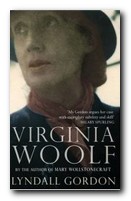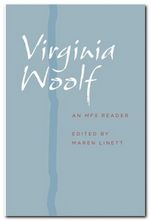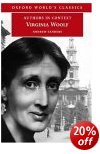original founder-member of the Bloomsbury Group
Julian Thoby Stephen was born in 1880, the elder son of Leslie Stephen and his wife Julia. His younger brother Adrian Stephen (b. 1883) became a psychoanalyst; his elder sister was the artist Vanessa Bell (b. 1879), and his younger sister was the novelist Virginia Woolf (b. 1882).

Because his mother had previously been married to the publisher Herbert Duckworth, Thoby had as half brothers George and Gerald Duckworth, both of whom were part of the large family that lived at Hyde Park Gate in Kensington.
His education began at Evelyn’s, a preparatory school. After failing to gain a place at Eton, he was sent to Clifton College in Bristol, which unlike most other public schools at the time placed an emphasis on science in its curriculum and was less concerned than most with social elitism. He studied Latin and classics, and from there he won an exhibition to Trinity College Cambridge.
At Cambridge he met Lytton Strachey and was considered for but not elected to the quasi-secret debating group called the Apostles whose other members around the same time included John Maynard Keynes and Leonard Woolf. Strachey fell in love with Thoby, attracted to his good looks, stature and masculine physicality: he nicknamed him ‘The Goth’.
When their father Sir Leslie died in 1904, the family house was sold and Thoby moved with his brother Adrian and two sisters to set up home in Gordon Square in Bloomsbury. They had found the Victorian atmosphere of Hyde Park Gate very oppressive, and moving to a district of London which at that time was not at all fashionable gave them a sense of slightly risque bohemianism.
Thoby invited some of his old Cambridge friends, along with writers E.M.Forster, Clive Bell and David Garnett, plus artist Duncan Grant, to a Thursday evening discussion group – which was effectively the birth of what came to be known (later) as The Bloomsbury Group. Leon Edel captures the impression he made on those around him in his psycho-analytic study Bloomsbury: A House of Lions
He was a solid male presence. Lytton said that Thoby was ‘hewn out of living rock’. His character was ‘as splendid as his appearance, and as wonderfully complete’. Leonard, half a century later, said that Thoby ‘had greater personal charm than anyone I have ever known. Thoby was loved alike by the Cambridge intellectuals and the hedonists. He shared with Clive Bell a delight in the out-of-doors—hunting, bird-watching, riding, walking, fishing. Thoby shared with Leonard a lively interest in politics, in philosophy—always with that poise and detachment out of which large figures are made. He shared with Vanessa a delight in form and colour and was himself a excellent draughtsman.
The next few years of his short life are rather a mystery – something his sister Virginia made into the central feature of her first great experimental novel, Jacob’s Room. The story is a ‘portrait’ of her brother – a composite of how he is perceived differently by the various people in his life
Thoby was called to the Bar at the Inner Temple in 1906, but later the same year he contracted typhoid whilst on holiday in Greece, dying shortly afterwards. His ashes were scattered on his mother’s grave in Highgate Cemetery.
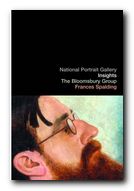 The Bloomsbury Group is a short but charming book, published by the National Portrait Gallery. It explores the impact of Bloomsbury personalities on each other, plus how they shaped the development of British modernism in the early part of the twentieth century. But most of all it’s a delightful collection of portrait paintings and photographs, with biographical notes. It has an introductory essay which outlines the development of Bloomsbury, followed by a series of portraits and the biographical sketches of the major figures.
The Bloomsbury Group is a short but charming book, published by the National Portrait Gallery. It explores the impact of Bloomsbury personalities on each other, plus how they shaped the development of British modernism in the early part of the twentieth century. But most of all it’s a delightful collection of portrait paintings and photographs, with biographical notes. It has an introductory essay which outlines the development of Bloomsbury, followed by a series of portraits and the biographical sketches of the major figures.
![]() Buy the book at Amazon UK
Buy the book at Amazon UK
![]() Buy the book at Amazon US
Buy the book at Amazon US
Bloomsbury Group – web links
![]() Hogarth Press first editions
Hogarth Press first editions
Annotated gallery of original first edition book jacket covers from the Hogarth Press, featuring designs by Vanessa Bell, Roger Fry, and others.
![]() The Omega Workshops
The Omega Workshops
A brief history of Roger Fry’s experimental Omega Workshops, which had a lasting influence on interior design in post First World War Britain.
![]() The Bloomsbury Group and War
The Bloomsbury Group and War
An essay on the largely pacifist and internationalist stance taken by Bloomsbury Group members towards the First World War.
![]() Tate Gallery Archive Journeys: Bloomsbury
Tate Gallery Archive Journeys: Bloomsbury
Mini web site featuring photos, paintings, a timeline, sub-sections on the Omega Workshops, Roger Fry, and Duncan Grant, and biographical notes.
![]() Bloomsbury: Books, Art and Design
Bloomsbury: Books, Art and Design
Exhibition of paintings, designs, and ceramics at Toronto University featuring Hogarth Press, Vanessa Bell, Dora Carrington, Quentin Bell, and Stephen Tomlin.
![]() Blogging Woolf
Blogging Woolf
A rich enthusiast site featuring news of events, exhibitions, new book reviews, relevant links, study resources, and anything related to Bloomsbury and Virginia Woolf
![]() Hyper-Concordance to Virginia Woolf
Hyper-Concordance to Virginia Woolf
Search the texts of all Woolf’s major works, and track down phrases, quotes, and even individual words in their original context.
![]() A Mrs Dalloway Walk in London
A Mrs Dalloway Walk in London
An annotated description of Clarissa Dalloway’s walk from Westminster to Regent’s Park, with historical updates and a bibliography.
![]() Women’s History Walk in Bloomsbury
Women’s History Walk in Bloomsbury
Annotated tour of literary and political homes in Bloomsbury, including Gordon Square, University College, Bedford Square, Doughty Street, and Tavistock Square.
![]() Virginia Woolf Society of Great Britain
Virginia Woolf Society of Great Britain
News of events, regular bulletins, study materials, publications, and related links. Largely the work of Virginia Woolf specialist Stuart N. Clarke.
![]() BBC Audio Essay – A Eulogy to Words
BBC Audio Essay – A Eulogy to Words
A charming sound recording of a BBC radio talk broadcast in 1937 – accompanied by a slideshow of photographs of Virginia Woolf.
![]() A Family Photograph Albumn
A Family Photograph Albumn
Leslie Stephens’ collection of family photographs which became known as the Mausoleum Book, collected at Smith College – Massachusetts.
![]() Bloomsbury at Duke University
Bloomsbury at Duke University
A collection of book jacket covers, Fry’s Twelve Woodcuts, Strachey’s ‘Elizabeth and Essex’.
© Roy Johnson 2000-2014
More on biography
More on the Bloomsbury Group
Twentieth century literature
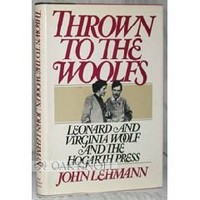
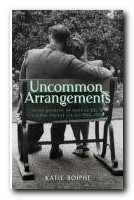

 Vanessa Bell (1879-1961) is best known as the sister of
Vanessa Bell (1879-1961) is best known as the sister of 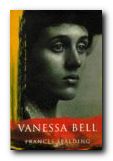
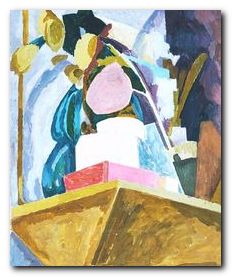 Clive Bell came to visit his sons, and Virginia and Leonard Woolf lived only four miles away. Other guests included
Clive Bell came to visit his sons, and Virginia and Leonard Woolf lived only four miles away. Other guests included 
